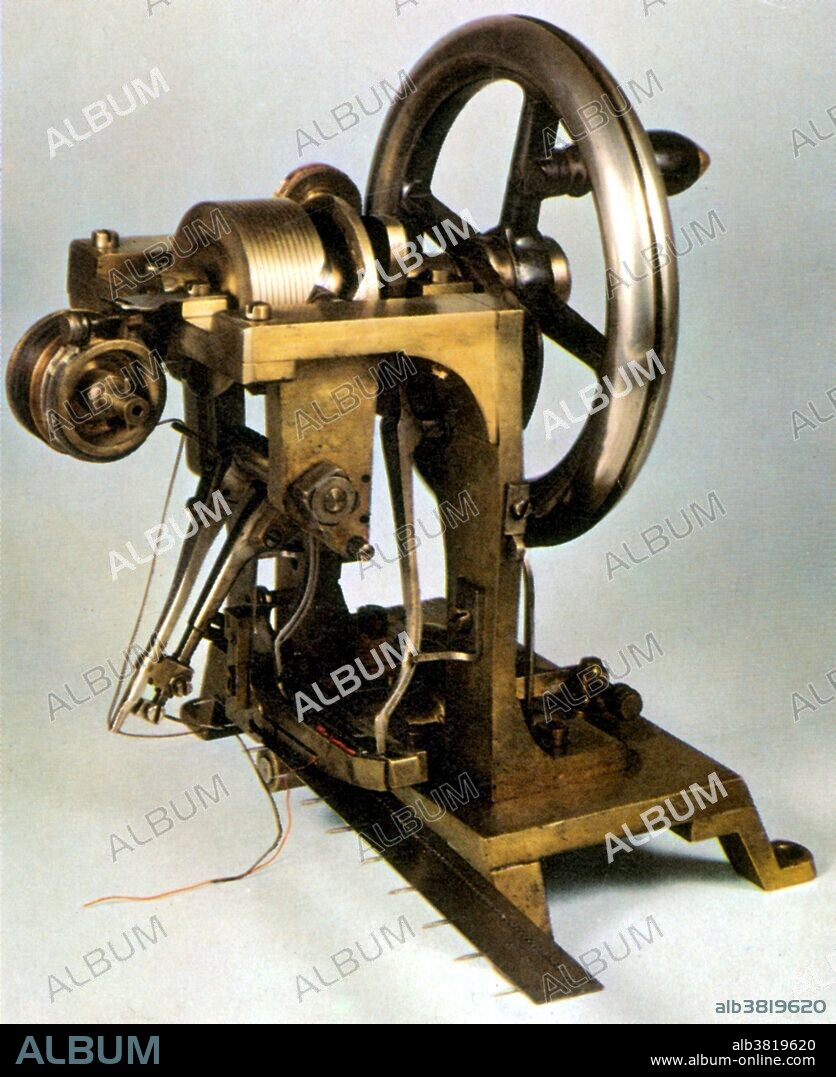alb3819620
Elias Howe Sewing Machine, 1845

|
Add to another lightbox |
|
Add to another lightbox |



Title:
Elias Howe Sewing Machine, 1845
Caption:
Howe's 1845 machine used lock-stitch. The shuttle loaded with red thread is at the bottom, just above the spiked baster plate which held the fabric as it passed through the machine. Elias Howe, Jr. (July 9, 1819 - October 3, 1867) was an American inventor and sewing machine pioneer. He originated significant refinements to the design concepts of his predecessors, and on September 10, 1846, he was awarded the first US patent (U.S. Patent 4,750) for a sewing machine using a lockstitch design. His machine contained the three essential features common to most modern machines: a needle with the eye at the point, a shuttle operating beneath the cloth to form the lock stitch, and an automatic feed. Howe was forced to defend his patent in a court case that lasted from 1849-54 because Isaac Singer, with cooperation from Walter Hunt, had perfected a facsimile of his machine and was selling it with the same lockstitch that Howe had invented and patented. He won the dispute and earned considerable royalties from Singer and others for sales of his invention. His sewing machine won the gold medal at the Paris Exhibition of 1867, and was awarded the Légion d'honneur by Napoleon III for his invention. He died later that year at the age of 48.
Credit:
Album / Science Source / New York Public Library
Releases:
Model: No - Property: No
Rights questions?
Rights questions?
Image size:
3000 x 3673 px | 31.5 MB
Print size:
25.4 x 31.1 cm | 10.0 x 12.2 in (300 dpi)
Keywords:
1845 • 19TH CENTURY • AMERICAN • AUTOMATIC FEED • BW • CELEBRITIES • CELEBRITY • ELIAS HOWE • FAMOUS PEOPLE • FAMOUS • FIGURE • GOLD MEDAL PARIS EXHIBITION • HISTORIC • HISTORICAL • HISTORY • HOWE • IMPORTANT • INFLUENTIAL • INNOVATOR • INVENTION • INVENTOR (MALE) • INVENTOR • INVENTORS HALL OF FAME • LOCK STITCH • LOCK-STITCH • LOCKSTITCH DESIGN • MALE • MAN • MEN • NOTABLE • PEOPLE • PERSON • PERSONALITIES • PERSONALITY • PHOTO • PHOTOGRAPH • SEWING MACHINE PIONEER • SEWING MACHINE • SPIKED BASTER PLATE • TECHNOLOGICAL • TECHNOLOGY • UNITED STATES • US • USA • WELL-KNOWN
 Pinterest
Pinterest Twitter
Twitter Facebook
Facebook Copy link
Copy link Email
Email

